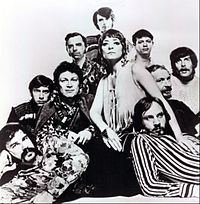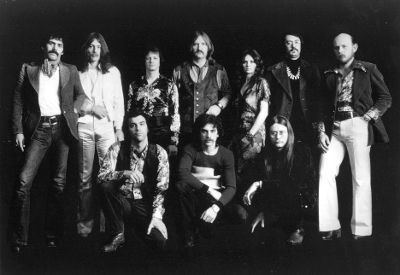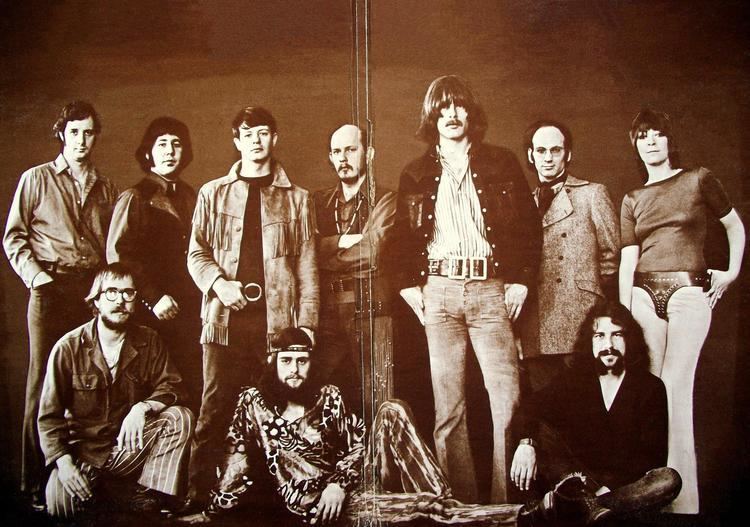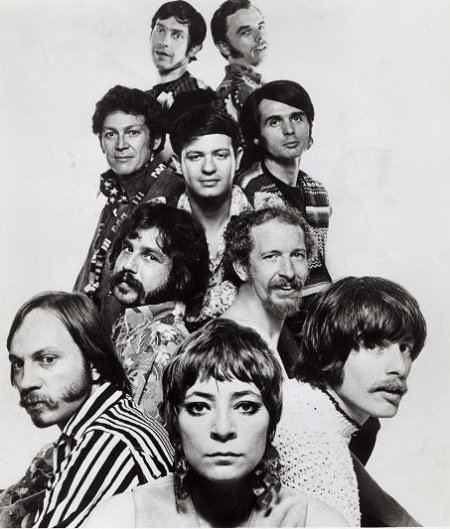Origin United States Active until 1974 | Genres Jazz-rock Active from 1968 | |
 | ||
Years active 1968 (1968)–1974 (1974) Past members Genya RavanAram SchefrinMichael Zager Albums Construction #1, Brief Replies, Peculiar Friends, The Best of Ten Wheel Drive Similar Goldie and the Gingerbreads, Michael Zager, Seatrain, Sweetwater, Bill Watrous | ||
Ten wheel drive tightrope
Ten Wheel Drive were an American jazz-rock band that existed from 1968 to 1974. Their sound is just like Chicago, Chase, Blood, Sweat & Tears, The Ides of March, and Lighthouse.
Contents
- Ten wheel drive tightrope
- Ten wheel drive morning much better
- History
- Line up
- Compilations
- Genya Ravan Discography
- Songs
- References

Ten wheel drive morning much better
History

In 1968, after the final break-up of the all-female rock band Goldie & The Gingerbreads , Genya Ravan was looking for a new band, as were two New Jersey musicians and songwriters, Michael Zager and Aram Schefrin. Acquainted by their managers, the three musicians would become the nucleus of the new band.

More musicians had to be found for the rhythm and brass sections. With the exception of Ravan, only people who were able to read sheet music were hired. In 1969 the band started to perform regularly and attract positive reviews. Record company wanted to make Ravan the second Janis Joplin.

At the same time, Polydor Records was forming an American division. Its new President, Jerry Schoenbaum, closed a deal with Ten Wheel Drive, and together with producer Walter Raim the band released its first album, Construction #1.

Ten Wheel Drive's first big concert appearance was in 1969 at the Fillmore East in New York City. Apart from the band's intense musical presence, Ravan caused some excitement when she took off her transparent vest and continued the performance half-naked with painted breasts and shoulders.

In the summer of the same year, Ten Wheel Drive appeared at the Atlanta Pop Festival. On this occasion Ravan and Janis Joplin, who had previously often been compared, met in person for the second time, having first met at Steve Paul's The Scene when Joplin sat in with the band.
In 1970, Ten Wheel Drive released their second album, Brief Replies, with producer Guy Draper. By then many of the brass musicians had also been replaced. 1971 saw Ten Wheel Drive performing at Carnegie Hall. The project consisted of a rock opera based on the Battle of the Little Big Horn and the history of the Native North American peoples. The American Symphony Orchestra and a choir participated in the project.
Also in 1971, the band's third album Peculiar Friends appeared, for the first time produced by Schefrin and Zager. Ravan’s decision to leave the band and start her solo career at this time. She was replaced by Annie Sutton of The Rascals. Schefrin and Zager later contributed to Ravan’s first solo album.
Ten Wheel Drive left Polydor and their fourth and final album, Ten Wheel Drive (1974), was released by Capitol Records. The album includes one song which had earlier been composed by Ravan with Schefrin and Zager, "Why Am I So Easy to Leave". With this record the already loose cooperation between the band's musicians ended. Late 70s, Michael Zager had big disco hit "Let's all Chant" in 1978.
Line-up
Construction #1
Compilations
Genya Ravan Discography
Songs
Eye of the Needle1969
Tightrope1969
Ain't Gonna Happen1969
